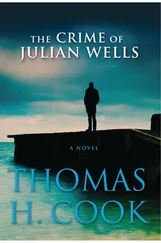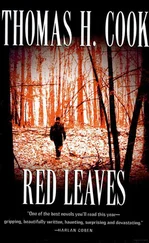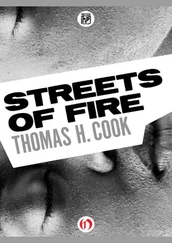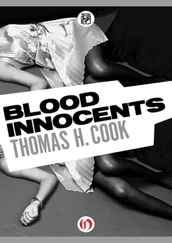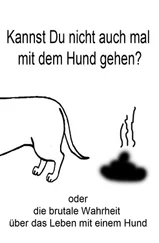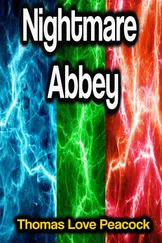Thomas Cook - Instruments of Night
Здесь есть возможность читать онлайн «Thomas Cook - Instruments of Night» весь текст электронной книги совершенно бесплатно (целиком полную версию без сокращений). В некоторых случаях можно слушать аудио, скачать через торрент в формате fb2 и присутствует краткое содержание. Жанр: Триллер, на английском языке. Описание произведения, (предисловие) а так же отзывы посетителей доступны на портале библиотеки ЛибКат.
- Название:Instruments of Night
- Автор:
- Жанр:
- Год:неизвестен
- ISBN:нет данных
- Рейтинг книги:3 / 5. Голосов: 1
-
Избранное:Добавить в избранное
- Отзывы:
-
Ваша оценка:
- 60
- 1
- 2
- 3
- 4
- 5
Instruments of Night: краткое содержание, описание и аннотация
Предлагаем к чтению аннотацию, описание, краткое содержание или предисловие (зависит от того, что написал сам автор книги «Instruments of Night»). Если вы не нашли необходимую информацию о книге — напишите в комментариях, мы постараемся отыскать её.
Instruments of Night — читать онлайн бесплатно полную книгу (весь текст) целиком
Ниже представлен текст книги, разбитый по страницам. Система сохранения места последней прочитанной страницы, позволяет с удобством читать онлайн бесплатно книгу «Instruments of Night», без необходимости каждый раз заново искать на чём Вы остановились. Поставьте закладку, и сможете в любой момент перейти на страницу, на которой закончили чтение.
Интервал:
Закладка:
The house was modest, but Portman seemed pleased with it. He stood proudly in the unpaved driveway. “Well, this is it,” he said, gesturing toward the house. “Dad lived here with me during his last few weeks. I fixed up one of the bedrooms, put in a ceiling fan, that sort of thing. I think he liked it okay.”
Once inside the house, Portman led Graves and Eleanor up a staircase and into the tiny room where Dennis Portman had died.
“Dad passed away almost thirty years ago.” Portman pointed to the narrow wooden bed at the end of the room. “I found him right there, still sitting up. Pictures and papers scattered all around him. The place is pretty much the way it was when he died. An old bachelor like me, I never had any reason to fix it up. No kids or anything.” He indicated two gray metal cabinets that stood on either side of the window on the other side of the room. “I piled all Dad’s old files in those cabinets. There’s no order to it, though, so you’ll just have to plow through everything. You can stay as long as you like. I’ll be downstairs, making lunch. After that I’ll take a snooze in the hammock. Either way, I’ll be around if you need anything.”
They went to work immediately after Portman left them, Graves at one cabinet, Eleanor at the other, both carefully sifting through what turned out to be the macabre residue of Dennis Portman’s professional life. Photographs of bodies sprawled across floors, streets, beds, floating languidly in ponds, streams, rivers. Bodies that had been shot, stabbed, beaten, then left in their awesome disarray.
At one photograph, Graves suddenly stopped. The picture showed a teenage girl, naked, strapped in a wooden chair, a wide piece of black tape slapped across her mouth. Her hands were roped together at the wrists, but she’d lifted her arms upward pleadingly, her fingers spread, as if begging that her killer spare her this last indignity, the captured image of her agony Graves now held in his hand.
“The things Portman saw,” Eleanor said softly as she moved up beside him.
Graves made no response. He felt his eyes lock on the picture, his body tighten, then grow limp, then tighten again, as if he were caught in a seizure. He turned the picture over, read the note Portman had written in his cramped script. Mary Louise Hagan, murdered January 7, ’61-Unsolved. Even without turning back to the picture, he knew the unspeakable suffering it portrayed. Now the details emerged, and he could see all that had been done to Mary Hagan, the scratches on her face, the burns on her inner arms and thighs, the small nest of dark hair that had been torn from her head and now lay curled around one leg of the chair. He heard her tormentor’s voice, imagined what he’d said at the moment he’d taken this picture, the delight with which he’d said it, Pretty, pretty. Once so pretty.
The name came from his mouth in a broken whisper: “Kessler.”
“What?” Eleanor said.
She watched him with a fierce insistence, and he knew that he had to give her some part of his story. “The girl in this picture. It reminds me of my sister,” he said quietly. He could see a hundred questions in Eleanor’s eyes. “She didn’t just die. Not like I said before. She was murdered. Tortured… When I was thirteen. The man who did it was never caught.” He let his eyes settle once again on the photograph. “For a moment I wondered if perhaps he’d done this too.”
Eleanor glanced at the photograph, then back at Graves. “You said, ‘Kessler.’”
“Yes.”
“You use that name for the villain in your books?”
“That’s right.”
“Is that actually the name of the man who killed your sister?”
“Yes,” Graves said, knowing that had he uttered the same name many years before, he’d have sent Sheriff Sloane in pursuit of the old black car with the Ohio plates he’d watched disappear into a bright summer dawn.
“I’m sorry,” Eleanor said. “About your sister.”
She seemed to sense that she should not pursue the matter further, that if she did, Graves would retreat into silence. And so she said nothing else, but only stepped away, returned to the cabinet, and began looking through the papers inside it. Almost half an hour had passed before she spoke again.
“Here it is,” she said. From the bottom drawer she lifted a thick manila file. Graves could see the single word Portman had written in tight black letters across the front of the envelope: Riverwood.
Unlike the carefully arranged material inside Portman’s official Murder Book, the papers and photographs he’d collected for his own use were in no specific order.
The report he’d written on Mona Flagg in 1946 lay amid a scattering of pictures that in themselves seemed to bear no relation to the murder of Faye Harrison. It consisted of nine single-spaced typewritten pages, and it was packed with details. Portman had gathered what amounted to a full criminal history of the Flagg family, beginning with Angus Flagg, a rumrunner who’d ferried illegal liquor down the Hudson to a thirsty Manhattan during Prohibition. Angus’ son, Lemuel, had continued the family business after Angus’ death in 1931, but with the end of Prohibition a year later he’d turned to more sophisticated crimes. He’d sold bogus stocks and real estate, carried out various forms of insurance fraud, and had even been implicated in a foiled plot to kidnap the teenage son of a wealthy industrialist whose summer home was only fifty miles from Riverwood.
Elmira Flagg, Lemuel’s wife, had kept herself busy as well. According to Portman’s report, she’d set up illegal card games, fenced stolen goods, and run a string of flophouses that were little more than low-rent brothels. The two had met in 1924 and married four years later. Elmira had given birth to her first child, a son named Roy, seven months before the wedding. Her daughter, Mona, had arrived four months after it.
Roy had followed in his parents’ footsteps. Though not for long. At twenty-three he’d been killed in a bank heist in Providence, Rhode Island. A third child, another boy, had drowned under what Portman described as “mysterious circumstances” at the age of ten. A second daughter, named Augusta, had apparently run away from home at fourteen, and after that simply vanished.
As for Mona, she had remained with the family, though from all Portman could find out, she’d managed to stay clear of most of its illegal activities. She’d been arrested for shoplifting at eight, dragged before a juvenile court judge, read a stern warning, and set free. As far as Portman had been able to determine, she had never been arrested again, though the old detective bluntly declared that it was “unlikely that she had never been recruited to work in one or another of her family’s many illegal schemes.”
But if, as a teenage girl, Mona had participated in various criminal conspiracies, such participation had ended abruptly when, as a young woman, she’d suddenly packed up and moved to Boston. Once there, she’d taken a room in a “female residence hall” and enrolled in a nursing school. Two months later, in June 1946, she met Edward Davies.
“So this was why Portman suspected Mona at first,” Eleanor said matter-of-factly. “Because her family were criminals.” With that, she turned back to the remainder of the papers and photographs Portman had stuffed into the Riverwood file.
There were a great many of them, considerably more than had been included in the Murder Book. Portman had gathered information on every aspect of life at Riverwood. There were neatly organized copies of bank statements, trust fund accounts, records of land transactions, deeds. Other items seemed merely to have been thrown haphazardly into the file-a topographical map of Riverwood and its environs, an empty envelope marked Devane Assoc., months of telephone and telegraph records.
Читать дальшеИнтервал:
Закладка:
Похожие книги на «Instruments of Night»
Представляем Вашему вниманию похожие книги на «Instruments of Night» списком для выбора. Мы отобрали схожую по названию и смыслу литературу в надежде предоставить читателям больше вариантов отыскать новые, интересные, ещё непрочитанные произведения.
Обсуждение, отзывы о книге «Instruments of Night» и просто собственные мнения читателей. Оставьте ваши комментарии, напишите, что Вы думаете о произведении, его смысле или главных героях. Укажите что конкретно понравилось, а что нет, и почему Вы так считаете.

